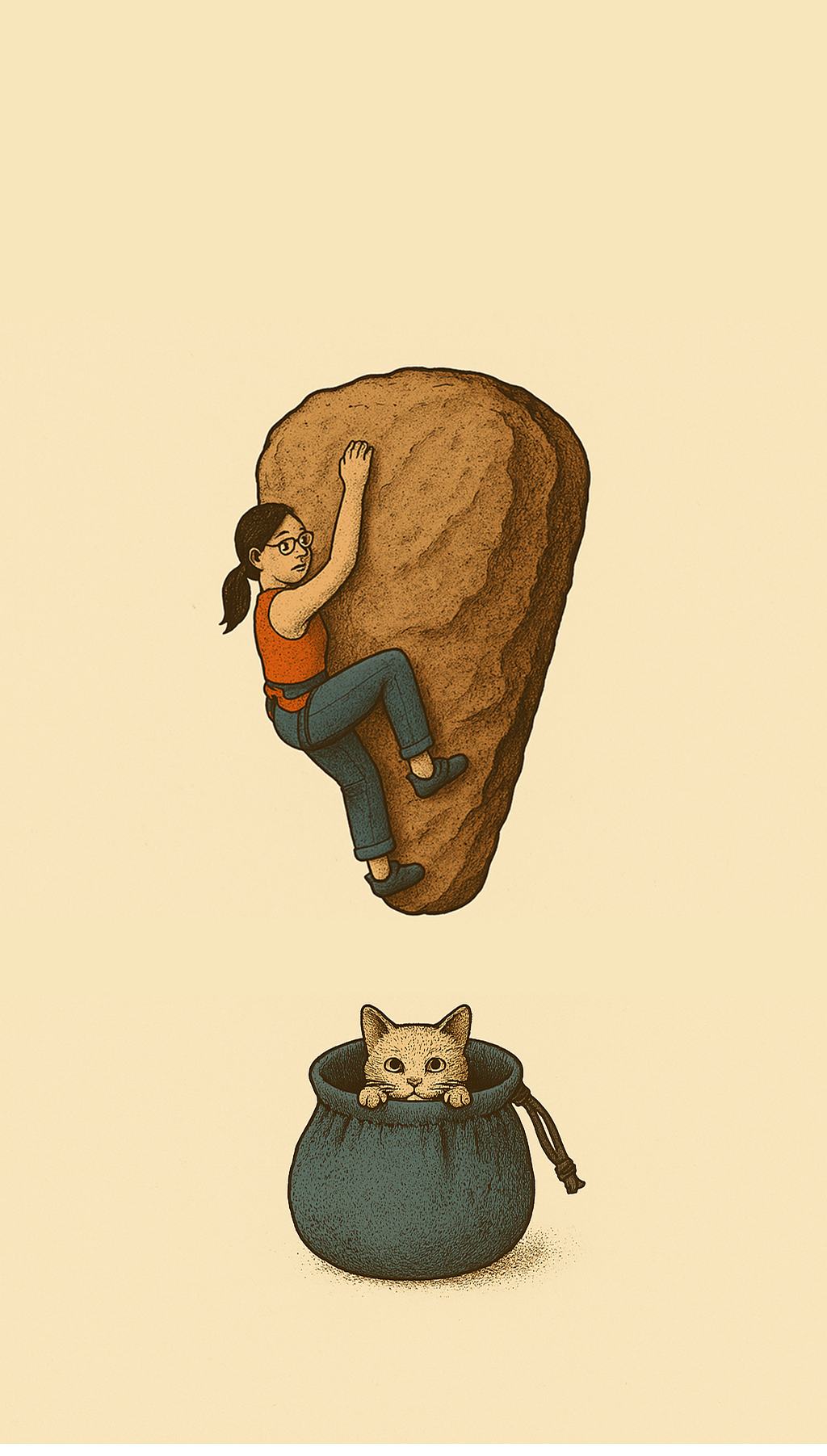“Comparison is the Key to Joy”: The Fall Necklace Drill
Stringing Together Falls by Focusing Exclusively on the Difference Between Two Adjacent Attempts
Context
Projecting sessions. Anywhere you know you will fall repeatedly.
We often treat falls as dead ends, or demand that each one be "better" than the last. This drill flips that. Here, the sole goal is to remember and describe the marginal difference between two adjacent falls. No improvement arc required.
You’re not trying to send. You’re not even trying to get closer to sending. You’re just collecting—and appreciating—the pearls of difference between each fall and the next, stringing them into a single, experiential necklace.
Purpose
Incentivise attention during the moment of falling itself.
Shift falling from "failure" to primary site of learning.
Train working sensory and spatial memory under stress.
Detach completely from outcome or linear progression.
Reframe frustration into curiosity.
Foster emotional regulation in the high-arousal moment of falling.
Essentials
At least 2 attempts required.
A problem or move you will reliably fall on.
Mindset of observer, not fixer.
Optional: notebook or voice memo for recording.
How to Do It
Pick Your Problem:
Must be something hard enough to guarantee falls.
First Attempt:
Climb normally.
When you fall, pause immediately.
Name exactly how you fell.
Swing direction.
Rotation.
Momentum.
Landing position.
Body tension at release.
Example:
“Swung 90 degrees left.”
“Twisted to the right.”
“Rolled backward off the mat.”
Second Attempt:
Climb again.
Either make a conscious adjustment or don’t.
The important thing: observe the fall.
Again, name it specifically.
Comparison:
Now, describe the difference between them.
Not whether one was better. Just different.
“Swung 70 degrees left instead of 90.”
“Less rotation.”
“Higher rebound off wall.”
String the Necklace:
Repeat for as many pairs as you want.
Always focus only on comparing two adjacent falls.
Let your session become a sequence of tiny differences noticed.
The act of remembering, describing, and holding that difference is the entire purpose.
The Philosophy
There is no demand to improve over the session.
You don’t need to “fix” anything.
You don’t need to reduce the swing, land softer, or get closer to sending.
Your only job is to notice the difference from one fall to the next.
Each pair of falls is one pearl. String enough pearls and you have your Fall Necklace—a physical practice in presence, memory, and sensory detail.
Advanced Variations
Record your descriptions on audio and listen back.
Compare notes from different days on the same move.
Do it silently, using only mental recall, as an attentional exercise.
Pair with breathwork between falls to regulate arousal.
Framing Cue for Yourself
When frustration spikes:
“I don’t need to send. I just need to remember the difference.”
The Payoff
Falling becomes the richest learning site, not the most frustrating.
Your brain learns to stay curious exactly when it most wants to shut down or panic.
Working memory for movement sharpens under real conditions.
Outcome orientation fades. Process orientation dominates.
This is about teaching yourself to love the fine-grained art of noticing. To become the kind of climber who remembers—not just powers through.
By incentivising only the comparison, not the improvement, you liberate yourself from the tyranny of progress. You learn to dwell in the difference.
